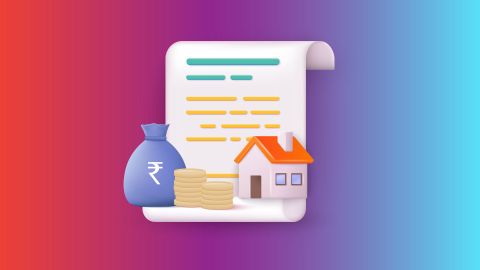What is bank rate?
The bank rate is the interest rate at which the RBI lends money to commercial banks. This money is usually given without any collateral. Think of it as a backup for banks when they need funds but don’t want to pledge assets.Here are the key features of the bank rate:
- Long-term loans: Bank rates apply to loans that are long-term.
- No collateral: These loans are unsecured. Banks don’t have to offer any security to borrow money.
- Direct impact on loans: If the RBI increases the bank rate, banks often raise the interest rates on loans given to customers.
What is repo rate?
The repo rate is the rate at which the RBI lends money to banks, but here’s the twist: banks provide collateral, such as government securities, in return. This is typically for short-term needs, like covering immediate cash shortages.Key features of repo rate:
- Short-term loans: Repo rate applies to loans with a shorter duration, usually overnight or a few days.
- Collateral-based: Banks have to pledge assets to get funds from the RBI.
- Liquidity management: It helps manage the liquidity in the economy.
Why do these rates matter?
Both bank rate and repo rate are essential tools for the RBI to control the economy. They impact borrowing costs, inflation, and even your home loan interest rate. For instance:- When the bank rate rises, loans like home loans become more expensive because banks pass on the higher costs to borrowers.
- When the repo rate increases, it directly impacts the cost of short-term loans and the liquidity in the market, influencing the interest rates on floating home loans.
How are they similar?
While there are differences, both rates serve a common purpose: managing the economy. Here’s what they have in common:- Monetary policy tools: Both are used by the RBI to influence the economy.
- Inflation control: Both help in controlling inflation.
- Impact on loans: They directly or indirectly affect the interest rates for individuals and businesses.
When does the RBI change these rates?
The RBI doesn’t change these rates every day. Decisions are made during the Monetary Policy Committee (MPC) meetings, which occur every two months.Factors influencing rate changes:
- Inflation levels: If inflation is high, the RBI increases rates to cool down spending.
- Economic growth: To boost growth, the RBI may reduce rates, encouraging banks to lend more.
- Currency stability: Rates also affect the value of the rupee against other currencies.
What should you do as a borrower?
- Watch the repo rate: If it’s reduced, consider refinancing your home loan for better terms.
- Choose between fixed and floating rates: During times of fluctuating rates, decide whether a fixed or floating interest rate is better for your home loan.
- Use a home loan EMI calculator: Tools like these help you see how rate changes impact your monthly budget.
How Bajaj Housing Finance Home Loan Can Help
Understanding the nuances of bank rate and repo rate is essential for making wise financial decisions, especially when planning to purchase a home. The dynamics of these rates directly affect home loan interest rates, which in turn influence your monthly EMIs.If you’re in the market for a home loan, Bajaj Housing Finance Home Loan offers tailored solutions to suit your needs. With competitive interest rates and flexible repayment options, you can secure your dream home without financial strain. Additionally, Bajaj Housing Finance provides tools like home loan EMI calculators to help you plan your budget effectively, ensuring you stay in control of your finances.
Here are a few reasons to opt for a Bajaj Housing Finance Home Loan:
1. High loan amount: Secure funding up to Rs. 15 Crore* to turn your dream home into reality.
2. Low interest rates: Enjoy interest rates starting 7.45%* p.a, and EMIs as low as Rs. 684/lakh*.
3. Quick approval: Get approved within 48 Hours* of applying – sometimes even sooner.
4. Flexible repayment tenure: Choose a repayment term of up to 32 years for comfortable EMIs.
5. Simple application: Take advantage of doorstep document collection for a smooth process.
6. Balance transfer facility: Move your existing home loan and get a top-up loan with better terms.
Apply for a Bajaj Housing Finance Home Loan and turn your plans into reality.



